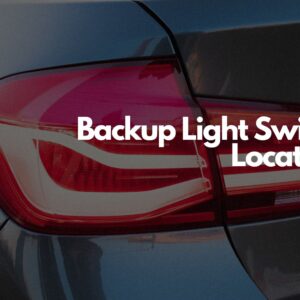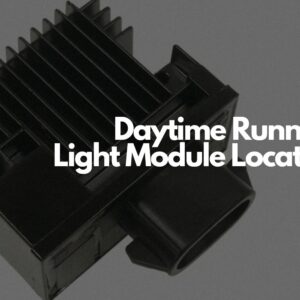Off-road lights are great for trucks and other vehicles made for the rough and tumble paths. But what difference does it make if they’re yellow or clear? Let’s look at how off-road lights work and what color lights you might want for your vehicle.
The Impact of Light Temperature
Before we delve into off-road lights, let’s look at light temperature to explain why clear and yellow off-road lights appear the way they do. Color temperature, which is measured in Kelvin (K), determines what color the lights appear. If the light’s color temperature is between 2500-4000K, it’ll appear more warm with a yellow or amber hue. Higher values of 4000-7000K will show cooler lighting like white and blue or violet.
The Science Behind Yellow Off-Road Lights
Light wavelengths affect how well the light bounces off of things like fog, rain, or snow. Higher color temperatures associated with white and cool light have shorter wavelengths that bounce off the particles more, causing poor visibility in certain conditions. Amber or yellow lights have longer wavelengths that appear to cut through dust, fog, snow, and rain. It’s commonly believed this is why yellow is a particularly good color for offroading.
Some scientists, however, claim that the true reason yellow off-road lights work so well is because of biology. Human pupils tend to increase in size in yellow and amber lights, and they decrease in size as the wavelengths grow faster and the light changes to cooler white and blue tones. Warmer light thus lets more light pass into the eye.
In addition to this, human visual systems are more sensitive to shorter wavelength light at night because of how our eyes use photoreceptors. We have two types of photoreceptors: rods and cones. In low light situations, we tend to use a combination of the two. Rods are more sensitive to blue-green lights and cones are more sensitive to green-yellow lights. That means rods, which are also more sensitive to movement, will pick up white light reflected off of snowflakes or fog more than yellow light. As a result, it’s easier to get distracted by the particles moving about, and it’s harder to see past them when your lights are white.
When To Use Yellow Off-Road Lights
Now, you won’t need to use your yellow off-road lights every night. It’s best to use them when driving through fog, rain, or snow. This will help keep your eyes from catching the light off the particles, preventing your visibility from getting obscured. Mounting your more amber lights lower on your vehicle can help keep the blinding effect of certain weather conditions to a minimum.
There’s also the shade of yellow off-road lights to consider. Amber is a common choice, but there are also selective yellow lenses that sit right between the white and amber colors. It’s great for light fog and for making your vehicle stand out at night. It also lights things up a little more than typical amber lights, allowing you to see farther in front of you without completely sacrificing that fog-cutting effect.

Yellow Vs. Clear Off-Road Lights
There are also off-road lights that come in a clear, white color. Human eyes see best on sunny days, which are about 5000K on the color temperature scale. These types of off-road lights project much farther than amber off-road lights. Their higher lumens output makes them seem much brighter. On a clear night, this increase in perceived brightness lets you see your surroundings much better.
As we’ve mentioned though, yellow light might serve you better in less than ideal weather conditions where fog and dust are involved. Certain manufacturers actually offer off-road lights that can be easily switched from yellow to clear. If you plan to drive in a variety of conditions, you might want to consider having both types on standby.
Beam Patterns
Other than light color and temperature, it’s important to know about beam patterns when choosing lights for off road. Beam patterns affect how the light is projected, and which one you need depends on what situations you intend to use your off-road lights in.
Fog Beam
Fog lights are designed to project light in a wide, horizontal area. A real fog light–one that will do you good when you’re trying to see in the fog–has a wide beam pattern (70 degrees to 120 degrees) with a sharp, flat cutoff on top. However, they cut off rather sharply on the vertical axis. Their range is a little limited in front of your vehicle as well. Fog lights are usually designed to be mounted below headlights, closer to the ground, and they shine beneath the layers of fog, dust, and snow in front of your vehicle. This way, they can light up a path in front of you without hitting (and reflecting off) the particles in your line of sight.
Driving Beam
Driving beam lights brighten a large area right in front of your vehicle and are meant to supplement high beam headlights. The beam pattern from these lights is rectangular and reaches beyond typical headlights. Driving beam pattern lights are occasionally not street legal depending on the manufacturer, so be sure to check before using them on the road.
Spread Beam
Spread beam lights are similar to driving beam lights, but they’re brighter, wider, and at times taller. Spread lights usually don’t need to follow any Society of Automotive Engineers (SAE) regulations since they’re not meant to be used on the road. They offer balanced lighting and are excellent for different off-road uses.
Flood Beam
Flood beam lights are great as work lights, back-up lights, and scene lights. They create a wide area of evenly distributed light that’s also quite tall vertically. They aren’t very intense, which reduces glare.
Wide-40 Beam
Wide-40 beam lights are a bit of a cross between fog beam lights and driving beam lights. With their wide coverage and increased brightness and light distance, they make for excellent off-road lights. However, these lights tend to not be street legal.
Spot Beam
Spot beam lights, also known as long range lights, create a very tight, focused beam of light with an incredibly far range. This allows the driver to see much farther down the road. The narrow light isn’t able to light up the areas beside it very much, but it pairs well with other lights that are able to brighten up areas around the vehicle.
Light Type
In addition to beam types and color, there are a variety of bulb types out there for your off-road vehicle:
Halogen Bulbs
Halogen bulbs are old technology, but they still get the job done. These bulbs are affordable with good light output and a warmer color temperature. They aren’t very power-efficient because a lot of their energy is given off as heat rather than as light, but they do defrost themselves in winter as a result.
High-Intensity Discharge (HID) Bulbs
High-intensity discharge (HID) or Xenon bulbs work especially well at long distances. These bulbs have some of the best light output out of all the standard off-road light types, and they balance cost, technology, power, and output quite well. They do require ballasts and a short warm-up time when starting though.
Light Emitting Diode (LED) Bulbs
LED bulbs are another option for your off-road lights. These bulbs are long-lasting, durable, and efficient. They give off bright light while retaining a small form factor. LED bulbs strike a good balance between power efficiency, cost, and light output. They do produce heat behind the LED though, which means they require a thermal management system and can’t defrost themselves.
In the end, a number of factors affect your lights when off roading. Color just so happens to be one of the most noticeable elements. It’s best to figure out what sorts of environments you’ll be taking your vehicle through, find the right beam pattern and light type for your travels, and then decide if you want yellow off-road lights to boot.
Where to Get Off-Road Lights That Fit Your Vehicle
The last thing you want is to drive through fog, rain, or snow with broken off-road lights. Gloomy weather can drastically affect your visibility, which is never a good thing. It’s best to regularly check on your off-road lights and replace them when necessary. Good thing we’ve got you covered here at CarParts.com.
CarParts.com offers a wide selection of high-quality off-road lights that are sourced from only the most trusted manufacturers in the industry. We’re committed to providing you with a hassle-free shopping experience, so you can easily find accurate and detailed fitment information for each product. You can also use our built-in vehicle selector to make your search easier, but if you need any help, don’t be afraid to reach out to our friendly customer service staff.
Don’t risk your safety by ignoring your broken off-road lights. Check out our catalog of high-quality off-road lights at CarParts.com and order one today!
Any information provided on this Website is for informational purposes only and is not intended to replace consultation with a professional mechanic. The accuracy and timeliness of the information may change from the time of publication.
































